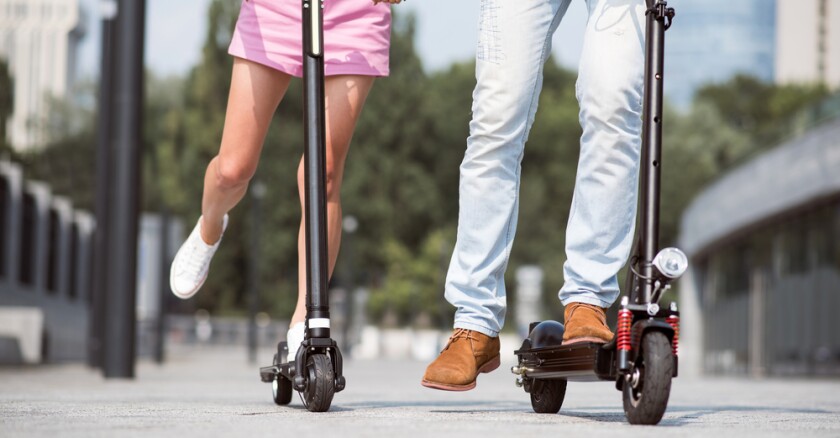“What was new, and kind of different over the last five years or so, scooters have become much more mainstream,” said Ashwini Chhabra, chief public policy officer at TIER Mobility, the world’s largest shared micromobility operator. The company recently acquired Spin.
“They’ve become more like how cities approached bike-share. And I think that transition will continue to where I think these services will be embraced much in the way that the city bus is considered to be as American as the library and the post office,” Chhabra added, speaking on a panel discussion last month at the CoMotion MIAMI conference. “It may have started out as a private service, but it provides a public service for a lot of our riders.”
As anyone who follows urban mobility will tell you, e-scooters arrived on the scene about five years ago. They have weathered the rapid head-turning — and often criticism — from everyone from city officials to residents, who have both embraced and balked at these new mobility gadgets. Since then, regulations have been put in place, data sharing has been established, and most importantly, partnerships have taken root among scooter operators and other mobility providers like ride-hailing and transit.
It is this evolution that most excites industry watchers like Chhabra, who pointed to the merging of micromobility with transit in a number of European cities as the kind of trend we could — and should — see in the U.S.
“And so, there is this realization at some point, that you are actually growing the size of the pie by facilitating these introductions,” said Chhabra.
To form those partnerships means “getting the digital right,” said Chhabra. But also, thinking through issues like the locations of mobility hubs, the placement of transit stops and the development of micromobility infrastructure like protected bike lanes.
“The places where we’ve seen the most successful programs are those where MaaS [mobility as a service] and multimodality doesn’t exist independently, but is part of a broader initiative to repurpose streets, repurpose parking, away from car utilization alone,” said Chhabra.
Merging micromobility and transit can help regions meet some of the larger transportation goals, particularly when thinking about sustainability or equity, said Carlos Cruz-Casas, chief innovation officer of the Miami-Dade County Department of Transportation and Public Works, adding that incentivizing bikes and e-bikes could help riders travel farther than they would on a scooter, and help to bring about other health outcomes.
"The more modes the better,” said Cruz-Casas, in some of his comments on the panel.
He also noted transit agencies are taking on more modes under their operations
“Bike-share started out as a private service. It’s quasi-public in many places now. And I can see a day when it’s much more akin to a bus service, because cities realize, this is actually a necessary service people are looking to us to provide,” he added.
Other cities like Denver have taken a slightly different approach to encourage the use of micromobility. The city and county government recently launched a program to provide cash rebates for residents buying an e-bike or e-cargo bike. After only three weeks the city limited the program when it reached capacity.
“The program has reached the maximum number of rebates that funding with allow,” Winna MacLaren, manager of communications and engagement in the Office of Climate Action, Sustainability and Resiliency in the city and county of Denver told Government Technology. The office will monitor how many of the vouchers are redeemed, and will "resume the program once we know how much funding remains after the initial rebate redemption period ends.
“We do not anticipate all of the rebates that were issued in the first three weeks of the program will be redeemed. We also do have funding for a full second and third year of the program,” MacLaren added.
The vouchers provided $400 for an e-bike, or $900 toward the purchase of an electric cargo bike. The rebates were higher for residents qualifying as low income. Consequently, some 40 percent of the applicants were “income-qualified,” said MacLaren.









